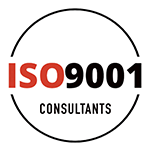Ensuring the security of our data is crucial. ISO 27001 helps us establish a comprehensive framework for managing information security. This standard not only assists in protecting data but also enhances trust with our customers and business partners. Achieving ISO 27001 compliance requires careful planning and commitment, but the benefits are substantial.
The process begins with understanding the core requirements of ISO 27001. These requirements guide us in implementing effective measures to secure our information. By focusing on these guidelines, we can create a robust Information Security Management System (ISMS) that addresses potential risks and vulnerabilities.
Once we comprehend the fundamentals, we take actionable steps towards certification. This involves everything from conducting a thorough risk assessment to implementing necessary controls. Each step plays a vital role in ensuring that our ISMS is aligned with ISO 27001 standards. However, achieving compliance is not without its challenges. We need to be prepared to address common obstacles and find efficient solutions to overcome them.
Maintaining and improving ISO 27001 compliance is an ongoing process. Regular monitoring and continual improvement ensure that our information security measures stay effective over time. This commitment to continuous enhancement not only maintains compliance but also helps us stay ahead of emerging threats.
Understanding the Basics of ISO 27001 Compliance
ISO 27001 is an international standard that outlines the requirements for an Information Security Management System (ISMS). This system is designed to help us manage and protect our sensitive information by addressing potential risks. Understanding the basics of this standard sets the foundation for effective compliance.
One of the key elements of ISO 27001 is identifying and managing risks to our information. This involves assessing the potential threats and vulnerabilities that could impact our data. By understanding these risks, we can implement appropriate controls to mitigate them. Another fundamental aspect of ISO 27001 is defining clear policies and procedures. These guidelines ensure that all employees are aware of their roles and responsibilities in maintaining information security.
Essential Steps to Achieve ISO 27001 Certification
Achieving ISO 27001 certification requires following several essential steps. First, securing commitment from top management is crucial. Their support ensures that we have the necessary resources to implement and maintain the ISMS. Next, we need to conduct a detailed risk assessment to identify potential threats to our information. This step helps us understand where our vulnerabilities lie and what measures we need to take to address them.
After identifying the risks, we develop a risk treatment plan. This plan outlines the specific controls and procedures we will implement to mitigate the identified risks. Additionally, we must create and document clear policies and procedures. Training employees on these guidelines is essential to ensure everyone understands their role in maintaining information security. Regular internal audits and reviews are also necessary to evaluate the effectiveness of the ISMS and identify areas for improvement. By following these steps, we can achieve ISO 27001 certification and strengthen our information security framework.
Common Challenges in ISO 27001 Compliance and How to Overcome Them
Achieving ISO 27001 compliance can present several challenges. One common issue is the difficulty in conducting a thorough risk assessment. Identifying all potential risks to our information assets can be complex and time-consuming. To overcome this, we must involve various departments and get a comprehensive view of our operations. Collaborating with different teams helps us identify risks that may not be immediately obvious.
Another challenge is ensuring that all employees are on board with the new security measures. Change can be met with resistance, especially when it involves altering familiar processes. To tackle this, we need to invest in proper training and awareness programs. Ensuring everyone understands the importance of information security and their role in maintaining it can significantly enhance compliance. Regular training sessions and clear communication can help mitigate resistance and foster a culture of security within our organisation.
Maintaining and Improving ISO 27001 Compliance Over Time
Maintaining ISO 27001 compliance requires ongoing effort. Regular audits are essential to ensure that our Information Security Management System (ISMS) remains effective. These audits help us identify areas for improvement and ensure that our security measures evolve with changing threats. By scheduling routine assessments, we can stay proactive in maintaining our compliance.
Continuous improvement is another crucial aspect. We should not view compliance as a one-time achievement but as an ongoing process. Implementing a cycle of regular reviews and updates allows us to adapt to new challenges and technologies. Engaging with employees for feedback on security practices can provide valuable insights for enhancements. By fostering a culture of continuous improvement, we ensure that our ISMS remains robust and effective in protecting our information assets.
Conclusion
ISO 27001 compliance offers multiple advantages, from enhanced security to financial benefits. Understanding its basics, taking essential steps, overcoming challenges, and committing to continuous improvement are vital for maintaining a secure environment. Achieving and maintaining compliance may require substantial effort, but the results are invaluable.
At ISO 9001 Consultants, we help businesses navigate the complexities of ISO 27001 compliance. Our expertise in training, auditing, and certification ensures your path to compliance is smooth and effective. Contact ISO 9001 Consultants today to secure your information assets and enjoy the benefits of ISO 27001 compliance.








Users Comments
Get a
Quote